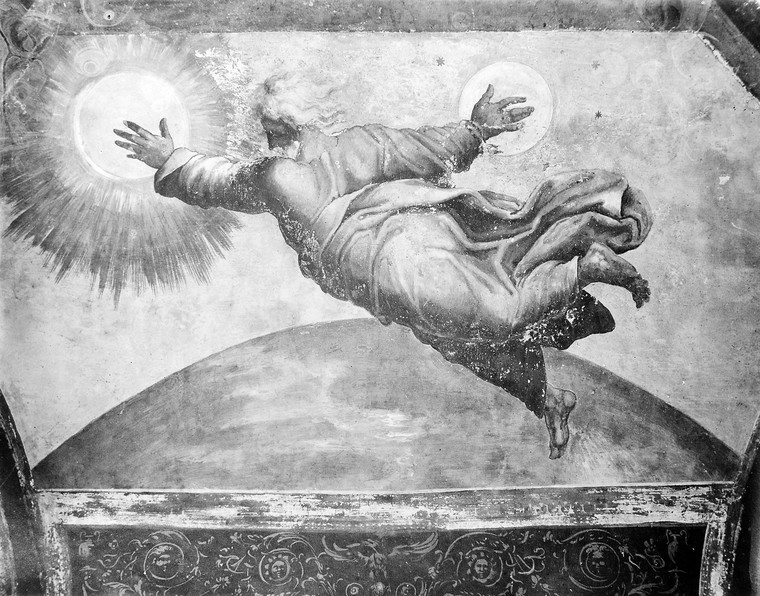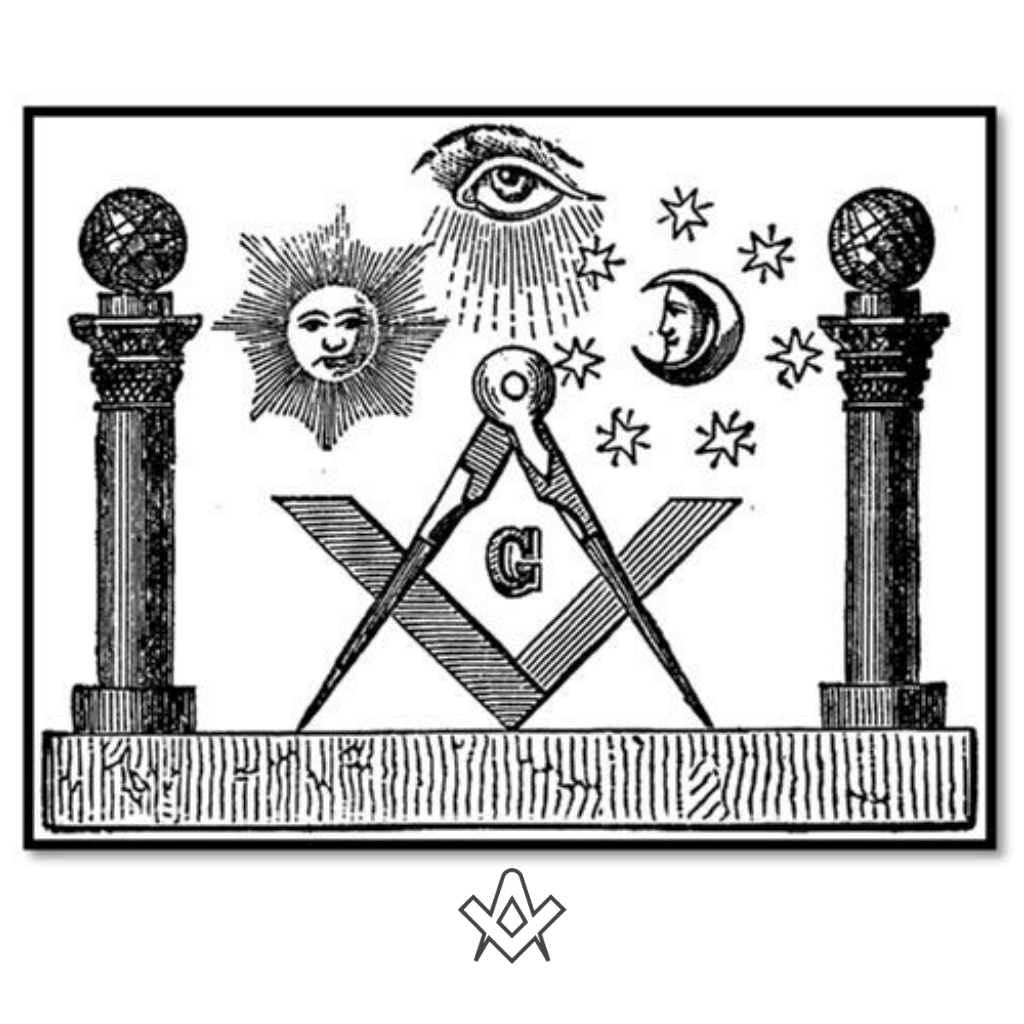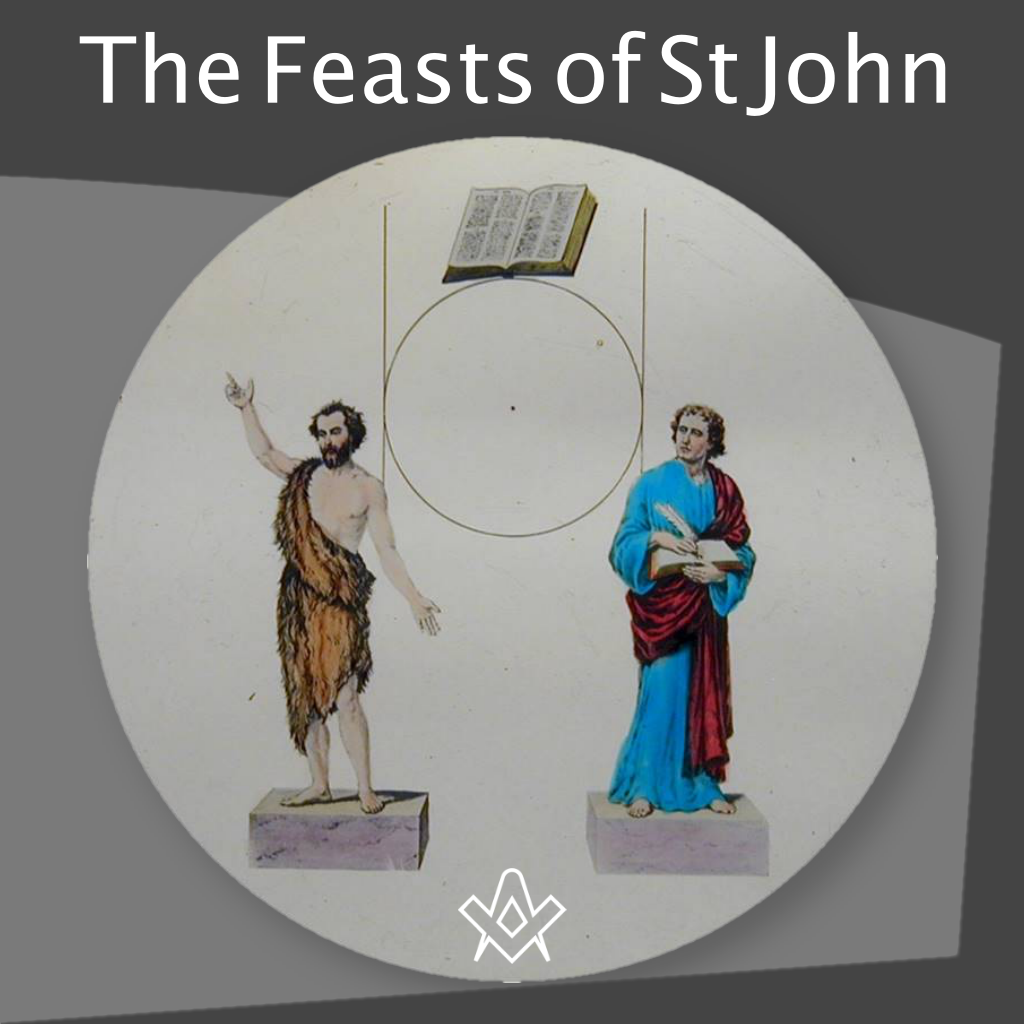Why do Freemasons historically celebrate two feasts of saints, both named John?
The feast of John the Baptist falls on 24 June, and that of John the Evangelist on 27 December, roughly marking the period of mid-summer and mid-winter.
During the Eighteenth Century, the Premier Grand Lodge of England and the Grand Lodge of Ireland favoured the day of John the Baptist, while the Grand Lodge of Scotland, the Antient Grand Lodge of England and the Grand Lodge of All England at York installed their Grand Masters on the feast day of John the Evangelist.
The United Grand Lodge of England was formed on 27 December 1813.
The first Grand Lodge was formed on 24 June, on the feast day of John the Baptist in 1717.
This may have arisen from a very old tradition, since the Baptist appears to have been regarded as the patron of stonemasons in continental Europe during the Middle Ages.
The guild of masons and carpenters attached to Cologne Cathedral was known as the Fraternity of St John the Baptist.
The earliest surviving record of Grand Lodge of Ireland installing a Grand Master is dated to 24 June 1725.
As records of individual lodges appear in Ireland and in the Antients in England, it seems many of them met to install a new master twice a year, on the feast days of both the Baptist and the Evangelist.
John the Evangelist is particularly associated with Scottish lodges.
The Lodge of Edinburgh was associated with the aisle of St. John the Evangelist in St. Giles Cathedral from the 15th century.
The Grand Lodge of All England, and its predecessor, the Ancient Society of Freemasons in the City of York, elected and installed their President, then from 1725 their Grand Master on the day of the Evangelist, and in London the Antient Grand Lodge of England elected their new Grand Masters on the same day.
When the Antients and the Moderns (the Premier Grand Lodge) eventually came together in the United Grand Lodge of England, it was on the Feast of the Evangelist in 1813.
Source: wikipedia
The Festival of St John the Evangelist
From The Craftsman – December 1866
All Christian nations celebrate Christmas time – the anniversary of the birth of Christ, the founder of the Christian religion and the object of its worship.
Many curious ceremonies are practiced by the people of Northern Europe, on each recurrence of this festival time, the signification and origin of which are little thought of by those who partake in them.
The bringing in of the great Yule Log wherewith to make the great Christmas fire.
The elevation of the oak tree bough, intertwined with the slender branches of the mistletoe, in each house, forming the kissing bush, which, for the period of twelve days, reigns supreme, and requires from all who pass beneath it, whether man or maid, submission to the kissing ordeal or payment of a fine.
These and many other Christmas customs of the old world, are associated very closely with the commemoration of this anniversary season, yet in themselves are so foreign to the occasion, or rather are so wanting in all suggestion of meaning as appertaining to this Christian festival, that it is not a little surprising that more do not ask whence come these strange and peculiar usages.
They have no natural relationship to the celebration of the anniversary of Christ’s birth.
There is but one answer to the inquiry here suggested, and that is, that these customs properly belong to the celebration of an anniversary season celebrated in the North of Europe for as many years before the birth of Christ as that time is previous to the present.
Two days after Christmas comes the anniversary of the day given to St John the Evangelist by the Church Calendar.
Anciently this was the great Masonic Festival Day, latterly much neglected for St John the Baptist’s day, six months earlier in the year.
The Evangelist’s Day was observed as the great Masonic Festival time from the period of the middle ages, when the Masons in Europe, actuated by their conflict with the Moslems of the East, began to Christianise their system by the adoption of St John as their patron Saint.
Saint John the Baptist’s day, on the other hand, did not rise to any note, even among Masons, until after the year 1720.

ST JOHN THE BAPTIST. COLOUR LITHOGRAPH BY C. SCHULTZ AFTER H. MEMLING.
IMAGE LINKED: WELLCOME ATTRIBUTION 4.0 INTERNATIONAL (CC BY 4.0)
We have alluded to the Christmas customs in this connection, and for this purpose, namely, to claim that those customs belong with quite as much, if not more propriety to the Masonic anniversary of St. John the Evangelist on the 27th of December.
We do not claim that these customs partake of any relationship to the Evangelist more than to his Lord and Master.
The customs to which we allude are associated with this period of the year and refer to celebrations observed by Masons long before the days of St John or Jesus Christ.
Centuries before in the oak forests of Germany or Britain, the old time Druids and Druidesses presided over similar festivals.
The conquering church adopted the customs of the period, and adapting them to their new religious systems, assigned to them a Christian name, but failed to give to them a Christian signification.
The Masons, finding the St John’s day of the Church occurred about the time when, for reasons having nothing to do with St. John the Evangelist, they had been in the habit of enjoying a festival season for ages, chose to call it St John’s day, and so observe it;
until those who have inherited their Masonry, having overlooked the true Masonic reason for the celebration at this season of the year, have very generally ceased to celebrate it, even as the anniversary of one of their patron saints.
We regard it as very much to be regretted that Masons fail to celebrate the day of the Evangelist St John. It is a loss to Masonry.
It is a surrender of an opportunity to direct the minds of the Fraternity to the origin of their Institution, antedating the times of Christ and the Evangelist, antedating the times of the ancient Druids, who in celebrating the great winter festival were merely commemorating a season which had been observed by men and Masons from the beginning.

THE CREATION OF SUN AND MOON. FRESCO IN THE VATICAN
IMAGE LINKED: WELLCOME ATTRIBUTION 4.0 INTERNATIONAL (CC BY 4.0)
And God said;
Let there be lights in the firmament of the heaven, to divide the day from the night;
and let them be for signs and for seasons, and for days and years.
As the sun ruled the day and the moon the night, so the moon marked the week of seven days and by its quartering the month of four weeks; so the sun measured the year, and the earth by its revolution and the eccentricity of its axis, pointed out the equinoxes and the solstices.
Very much in Masonry has thus an astronomical origin. The moon has always been used to indicate by its quarterings the time for lodge meetings.
And among all the nations of antiquity, the equinoxes and solstices were ever regarded as seasons of great importance.
Especially in the ancient mysteries, was great stress laid upon the solstices, and the winter and summer solstice, the shortest day and the longest day of the year, commemorated with great ceremony.

The well-known Masonic symbol, the point within a circle bounded by the two parallels – refers to this;
the point, the sun, the centre of the solar system;
the circle, the earth’s orbit around the sun;
the parallels, where they touch the circle, the winter and summer solstice, the limit of the sun’s apparent course to the Northward and Southward of the Equator;
the left hand perpendicular, B**Z or the Northern Pillar,
the right hand perpendicular, J****N, the Southern Pillar,
standing in the porch of the Temple of the Lord, which is the Universe,
while the Bible, as now placed in the symbol, or more properly in our opinion the sun, as the symbol of divinity, has its place in the Orient.

Just in the same manner as the Christmas celebration, and the Evangelist St John’s celebration, Masonically refer to seasons having an astronomical origin, so even do those celebrated pillars in front of Solomon’s temple.
Although usually referred to the pillar of cloud and the pillar of fire, which followed and preceded the Hebrews in the wilderness, –
so even do these pillars refer to that older custom of erecting in front of temples one pillar to fire and another to the wind, in allusion to the solstices, in the one when the rays of Sol are most fiery, and in the other, when the winds of Boreas are most piercing and violent.
The summer solstice occurs about the twenty-first of June, near enough to the anniversary of St John the Baptist to lead to the ready adoption by the middle age Christianising Masons of that day, in preference to the twenty-first.
The winter solstice occurs about the twenty-second of December, near enough to the day given by the Church to St John the Evangelist, to induce the Masons to surrender to it their preference for the twenty-second.
A day or two either way, it was thought, no doubt, made no essential difference.
But a great mistake was committed. It cast adrift the Fraternity from the reverence for days and seasons of deep Masonic significance and led them to the adoption of anniversaries which have no essential Masonic meaning.
And during the present generation the entire neglect of the anniversary of St John the Evangelist has led to the surrender of the Christmas festivities to the Church, which more properly and only legitimately belong to the Freemasons.
Can this departure from old Masonic custom have gone so far as to render it altogether hopeless to expect that the great Masonic festival of the winter solstice may ever be revived?

